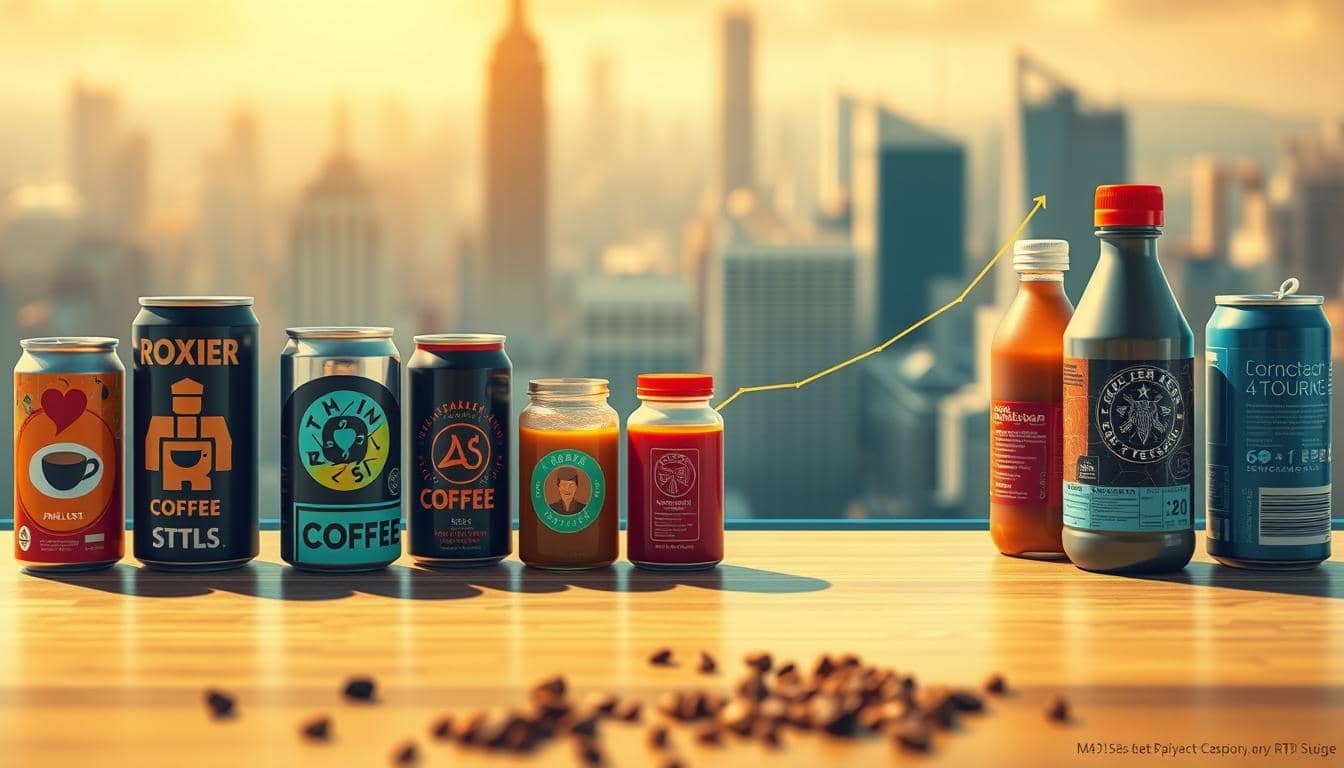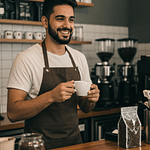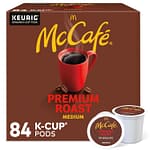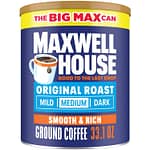In 2021, the global RTD tea and coffee market reached $86.8 billion. This is nearly four times its value from just two years before. Experts predict the RTD coffee market alone could reach $117.68 billion by 2028. Is this a lasting trend, or just a fleeting fad?
Starbucks now makes up 75% of its sales from cold drinks. Cold brew RTD is leading the way. Even as coffee shops regained 96% of their pre-pandemic sales, RTD coffee’s popularity shows people want quick caffeine.
Brands like Bai and CHERRiSH are adding protein, probiotics, and immunity-boosting ingredients. They’re turning cans into health hubs.
Key Takeaways
- RTD tea and coffee sales quadrupled from $22.44 billion in 2019 to $86.8 billion in 2021.
- RtD coffee’s market value could grow to $117.68 billion by 2028, driven by cold brew and premium options.
- 75% of Starbucks’ sales now come from cold beverages, signaling a shift to chilled coffee culture.
- Immunity-boosting ingredients like vitamin C and probiotics are fueling demand for functional RTD drinks.
- RtD coffee’s growth outpaces traditional coffee, with premium organic varieties growing 39% faster than packaged coffee.
Introduction
Ready-to-drink (RTD) coffee is more than a trend; it’s a big change. Now, you can find bottled coffee in places like corner stores and gas stations. This change shows how much we value coffee convenience in our fast-paced lives.
The Coffee Revolution in a Can
The RTD coffee market is expected to reach $43.8 billion by 2028. In the U.S., sales went from $850 million in 2005 to $1.5 billion in 2013. These numbers show how much people want RTD coffee.
- 21% of drinkers see cold brew as a healthier low-acidity option
- Multi-serve bottled coffee sizes (32 oz+) spiked during pandemic lockdowns
- Asia-Pacific markets dominate with 50% global share, fueled by milk-based drinks in Japan and Korea
“People aren’t just buying caffeine—they’re buying moments,” says a 2023 industry report. “The can or bottle becomes a vessel for instant ritual.”
Even big names like Starbucks and Peet’s are getting into RTD coffee. But there’s a debate: Is bottled coffee a game-changer or a trade-off? This article will look at both sides. When your morning coffee comes in a can, quality and taste matter more than ever.
We’ll dive into the science behind cold brew methods and why dairy-free and zero-sugar options are popular. But first, let’s understand what RTD coffee is and why it’s so popular.
What Is RTD Coffee?
Think of RTD coffee as coffee’s version of bottled tea or soda—but with more caffeine. Cold brew is made by steeping coffee beans in water for 12–24 hours. This makes a smooth, less acidic coffee that’s perfect for RTD drinks.
Flavors like cookies and cream or salted maple are then added. Plant-based milks make vegan lattes possible. The production process uses pasteurization or UHT to keep drinks fresh without preservatives.
- Flavor explosions: Mocha, peanut butter, or fruit-infused RTD blends
- On-the-go appeal: 8-ounce to 16-ounce sizes for commutes or office breaks
- Health meets indulgence: Low-calorie options sit beside velvety cold brew lattes
Today’s RTD coffee is more than a trend—it’s a mix of tradition and new ideas. With options like zero-sugar cold brew to matcha-infused drinks, every bottle or can is a step towards convenience without losing quality.
Why RTD Coffee Is Gaining Popularity
Ready-to-drink coffee is more than a trend. It’s a response to our fast-paced lives. Coffee convenience meets innovation in every can or bottle. It offers a quick sip of efficiency in our busy days.
Vantage Market Research shows this shift. Busy lifestyles drive demand, with global sales hitting 7.732 million liters in 2023 alone.
Convenience, Innovation, and Changing Consumer Habits
Imagine grabbing a cold brew latte on the way to work instead of waiting in line. That’s the ready-to drink coffee revolution. Starbucks leads with 39% of the U.S. market, but new players like Black Rifle Coffee Company and Rise Brewing Co. are changing the game.
They offer bold flavors like nitrogen-infused cold brew or keto-friendly options. Brands like Kitu cater to these cravings.
- 45% of Chinese consumers prioritize flavored options.
- 63% of Germans seek “moments of pleasure” through RTD choices.
- Flavors like cappuccino and café latte make up 70% of new product launches.
“The pandemic reshaped how we drink coffee. Work-from home routines made at-home RTD sales soar.”
Health trends also play a role. Over 40% of global consumers want energy without the crash of energy drinks. Brands like Califia Farms add vitamins or collagen, while 48% of U.K. drinkers crave wellness boosts.
Even social media fuels this trend. Cans with sleek designs become Instagram staples.
Numbers don’t lie: the global market hit $22.44 billion in 2019 and could triple by 2032. With innovation and demand rising, RTD isn’t just convenient—it’s a lifestyle.
Best RTD Coffee Brands in the Market
We tested 31 RTD coffee brands and found some real standouts. They offer great flavor, innovation, and values. These leaders are changing the grab-and-go coffee scene.
Big names like Starbucks and Dunkin’ bring their café fame to RTD. Their products, like Starbucks Frappuccino and Dunkin’ Iced Coffee, are everywhere. For those who love craft coffee, La Colombe is a must-try with its nitro cold brew and lattes.
Stumptown has been bottling cold brew since 2010, offering smooth, sugar-free drinks. Blue Bottle’s “Bold” line comes in 10.5-ounce cans with strong roasts. Wandering Bear’s 11-ounce cans pack a caffeine punch, like four espresso shots.
- Nguyen Coffee Supply: Uses Vietnamese robusta beans and offers 7.5-ounce non-dairy lattes, focusing on heritage.
- Cxffeeblack: Emphasizes Black-owned suppliers in their 9-ounce cans, combining quality with equity.
- High Brew: Provides 8-ounce Mexican vanilla flavors and adds functional ingredients like collagen.
Even big stores like Target and Whole Foods carry these brands. Specialty brands like Taika and Electrolit add unique flavors, from matcha lattes to electrolyte-infused drinks. With 65% of Americans drinking coffee every week, RTD coffee is here to stay.
How RTD Coffee Compares to Freshly Brewed Coffee
Taste is key when comparing RTD coffee to freshly brewed. Freshly brewed coffee has rich flavors, but RTD faces challenges like acidity and flatness. Brands like Nguyen Coffee Supply have tested nearly 40 RTD varieties, showing progress.
The Taste Test: Convenience vs. Craft
Recent blind tastings of 44 RTD black coffees showed 80% scored below 90 points. Dean’s Beans and Quivr scored 91, and Blue Bottle scored 90. Success often comes from cold brew methods that reduce acidity.
GK Coffee’s 1:15 coffee-to-water ratio for their Lychee Rose Cold Drip shows innovation in flavor balance. Temperature is also important. RTD’s chilled serve is refreshing but lacks the warmth of hot coffee.
Customization is limited, but RTD’s consistency is a plus. A Wandering Bear 32-ounce carton offers consistent flavor every time.
- Cost Breakdown: RTD is cheaper than café brew but pricier than home-brewed. A 16-ounce can costs $3–4, while home brew averages $0.50 per cup.
- Quality Shift: Brands like Snapchill use tech to reduce bitterness, but 17% of RTD coffees still scored mid-80s.
For those always on the go, RTD’s convenience is worth the flavor trade-offs. But for those who love rich flavors, freshly brewed is still the winner. RTD is great for speed and portability, while brewed offers control and complexity.
Is RTD Coffee Healthy?
When it comes to ready-to drink coffee, health matters. Let’s look at what’s in your can or bottle. From calories to caffeine, every sip is important.
Nutritional Profiles and Functional Benefits
Most ready-to drink coffee has 50–200 calories per serving. This depends on added sugars or creamers. Unsweetened types like cold brew coffee have less than 5g sugar. Flavored or cream-based drinks can have up to 20g sugar.
Caffeine levels also vary. Black Rifle Coffee’s 15-oz cold brew coffee has 300mg, more than a double espresso!
- 47% of drinkers seek ready to drink coffee with antioxidants
- 35% want brain-boosting ingredients
- 30% prefer probiotics
Cold brew’s slow steeping process reduces acidity by 67% compared to hot brew. This makes it easier to digest for some. Many brands now offer oat milk blends (36% prefer non-dairy) or protein-added options (35% want them). But, be aware of additives like potassium sorbate for shelf-stability.
“Functional ingredients are the new battleground for RTD brands.” – Industry analyst, 2023
Premium brands like Starbucks or Super Coffee aim for health-conscious buyers. But, ready to drink coffee varies a lot. Choose low-sugar options, look for functional claims, and balance with your daily intake. Your health and taste buds will appreciate it.
Conclusion: The Future of Ready-to-Drink Coffee
Ready-to-drink coffee is becoming a big part of our lives. It’s expected to hit $43.8 billion by 2028. Brands like Starbucks and Keurig Dr Pepper are leading this trend, showing it’s here to stay.
Where Convenience Meets Quality: The Evolving RTD Landscape
Quality is now as important as convenience. New methods like 1-hour cold brew and eco-friendly packaging are emerging. Companies like Ueshima Coffee and Starbucks are focusing on both taste and the environment.
Cold brew’s $604 million market in 2023 shows people want great taste and ease. Asia-Pacific leads with 82.5% of sales, favoring sweetened milk-based drinks. In North America, there’s a love for artisanal cold brew and nitro.
Ready-to-drink coffee isn’t replacing coffee shops. It’s making coffee more accessible. With 30% of Americans preferring iced drinks, brands are blending cold brew with plant-based options. Sustainability and flavor innovation will keep shaping the RTD market.
FAQ
What is ready-to-drink (RTD) coffee?
RTD coffee is a pre-made coffee drink sold in bottles, cans, and boxes. It includes cold brew and flavored lattes. It’s made for easy drinking on the go.
How did RTD coffee become so popular?
RTD coffee became popular because people are busy and want quick drinks. New brands and young people’s love for easy drinks helped too. The pandemic also made it more popular as people avoided coffee shops.
Are there different types of RTD coffee?
Yes! There’s black cold brew, creamy lattes, nitro-infusions, and flavored coffee. This variety meets different tastes, so there’s something for everyone.
How does RTD coffee compare to freshly brewed coffee?
RTD coffee is made for convenience and has a consistent taste. Freshly brewed coffee is often fresher but RTD is reliable for those in a hurry. The brewing method affects the taste, but RTD is good for quick drinks.
Is RTD coffee healthy?
RTD coffee’s healthiness depends on the brand and type. Some are low in calories and sugar, while others have more. Always check the label and think about your health goals.
What should I look for when choosing RTD coffee?
Look at the flavor, sugar, caffeine, and any health benefits. Choose based on your diet, like low-sugar or plant-based options.
Are there any notable brands that stand out in the RTD coffee market?
Yes! Starbucks and Dunkin’ are well-known, but there are also unique brands like Cxffeeblack and Nguyen Coffee Supply. New brands are also offering exciting products.
How does the packaging of RTD coffee affect its quality?
The packaging, like cans or bottles, keeps RTD coffee fresh. Different methods, like pasteurization, help it last longer but can change the taste.










